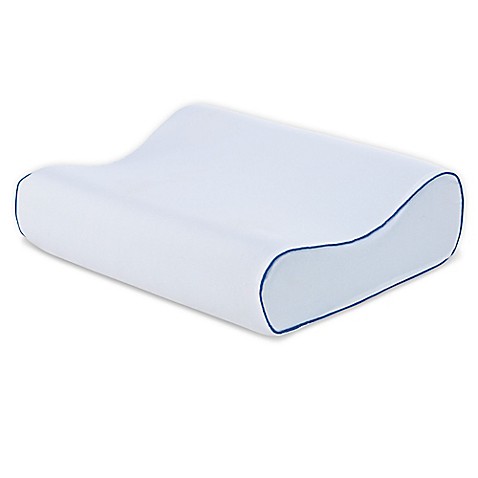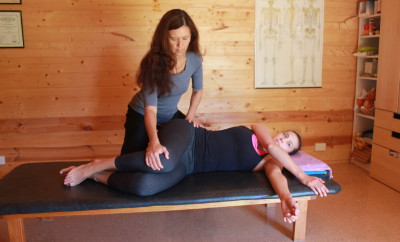
Health x Wellness
The Right Pillow to Keep the Pain Low
Sylvia Ho, Senior Principal Physiotherapist, at Core Concepts shares some tips on how to improve the quality of your sleep, simply by having the right pillow.
 We’ve seen studies that prove Singaporeans are not getting enough sleep and most of us know the effects of a lack of sleep. But we often forget that our quality of sleep is equally important. Having a good pillow is one of the essential elements to quality rest.
We’ve seen studies that prove Singaporeans are not getting enough sleep and most of us know the effects of a lack of sleep. But we often forget that our quality of sleep is equally important. Having a good pillow is one of the essential elements to quality rest.
You’re probably thinking: “I feel comfortable with my pillow and I sleep very soundly, so I guess my pillow is perfect for me.” If you feel comfortable with your pillow, what it means is that it’s likely that your neck can accommodate the shape of the pillow. In such instances, there may not be a need for a pillow change. What you should be aware of, is that when a pillow is too high or too low, it can add compression to the joints in the neck, which may lead to future problems. This is why it’s still recommended that you use a pillow that works for you – to prevent future aches and pains.
So, what is a good pillow? Unfortunately, there is no single formula for solving this pillow equation. The answer depends on the type of sleeper you are.
Essentially, a good pillow needs to preserve the natural curvature of the neck so that it can remain in a neutral position. Using an unsuitable pillow for a long period of time can cause excessive stress to the neck, leading to pains. Your pillow should allow your neck to fully rest without putting pressure on it. Here are a few pointers to get you started on your hunt for the perfect pillow, depending on the type of sleeper you are:
Back sleeper

When you lie on your back, you’ll notice a huge gap at the back of the head and upper back. It is natural for the head to tilt backwards, pushing the chin up. This position, however, can cause a lot of strain on the neck over time.
Using a contour pillow to fill the gap between the back of the head and upper back can help maintain the natural curve of the neck. The pillow should also have a slight contour to accommodate the curvature of the head. Just remember that when using a contour pillow, the higher end of the pillow should be the side inserted underneath the hollow of your neck, closer to your shoulder.
If you find that the contour pillow is too low for you, you can use towels and pile them on top of a regular pillow. The towels serve as an alternative to the modified higher end of the contour pillow and work to fill the gap between the back of the head and the upper back.
Side sleeper
 A contour pillow also works for those preferring to sleep on their sides. The selected pillow should be one with a height equal to the distance measured from the
A contour pillow also works for those preferring to sleep on their sides. The selected pillow should be one with a height equal to the distance measured from the
base of your neck to the tip of your shoulder. It is also important to keep your spine in a straight, horizontal line and thus, it is advisable to pull the pillow as close as possible to the top of your shoulder to avoid any gaps in between.
Front sleeper
Those that sleep face-down face a tricky problem: the position forces your neck to be turned to one side, putting compression on one side of the neck. This isn’t the most ideal sleeping position to adopt and pillows won’t help reduce the rotation of the neck. Nevertheless, front sleepers can gain the most support from a soft, low pillow to reduce stress to the neck. To do this, put a pillow lengthwise to under one side of the body. For example, if your head is turned to the left then a pillow should be placed under the left side of the trunk to reduce cervical rot.
Combination sleeper
If you’re the type of person who doesn’t have a fixed sleeping position, chances are you’re a combination sleeper. The best type of pillow to get is one that isn’t too stiff so that it can be adapted to different sleeping styles. If you don’t move too much but tend to enjoy turning, it is advisable to place a small towel, rolled up to about one to two inches under your neck for extra support. Ensure that the pillow is a reasonable size such that it allows for turning while ensuring you will not end up sleeping next to your pillow before you wake up. Otherwise, a contoured pillow that isn’t too high would do the trick as well.

With support for your back and neck, you can avoid morning stiffness and pain, both of which pave the way to true rest for your body. If you experience ongoing pain even after using a suitable pillow, a physiotherapist can help to assess and diagnose your underlying condition. By then, you may need more than just a pillow change.









